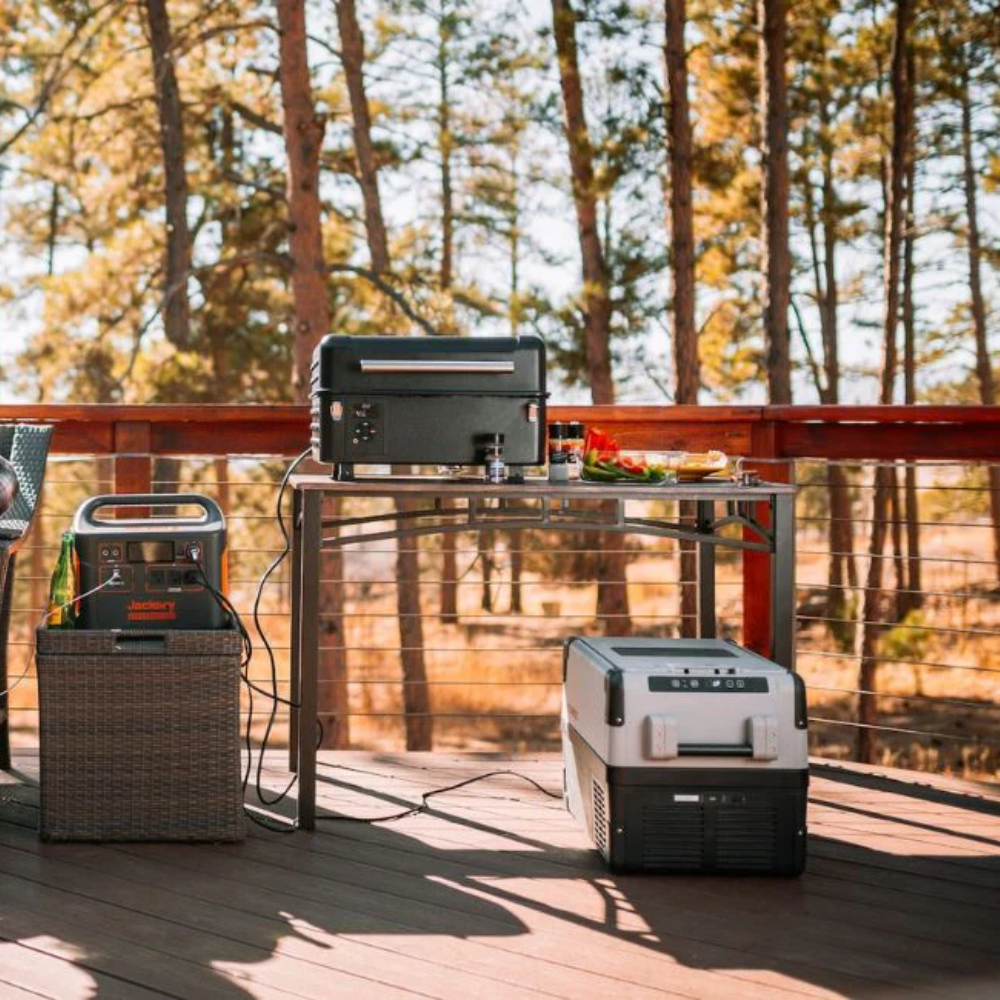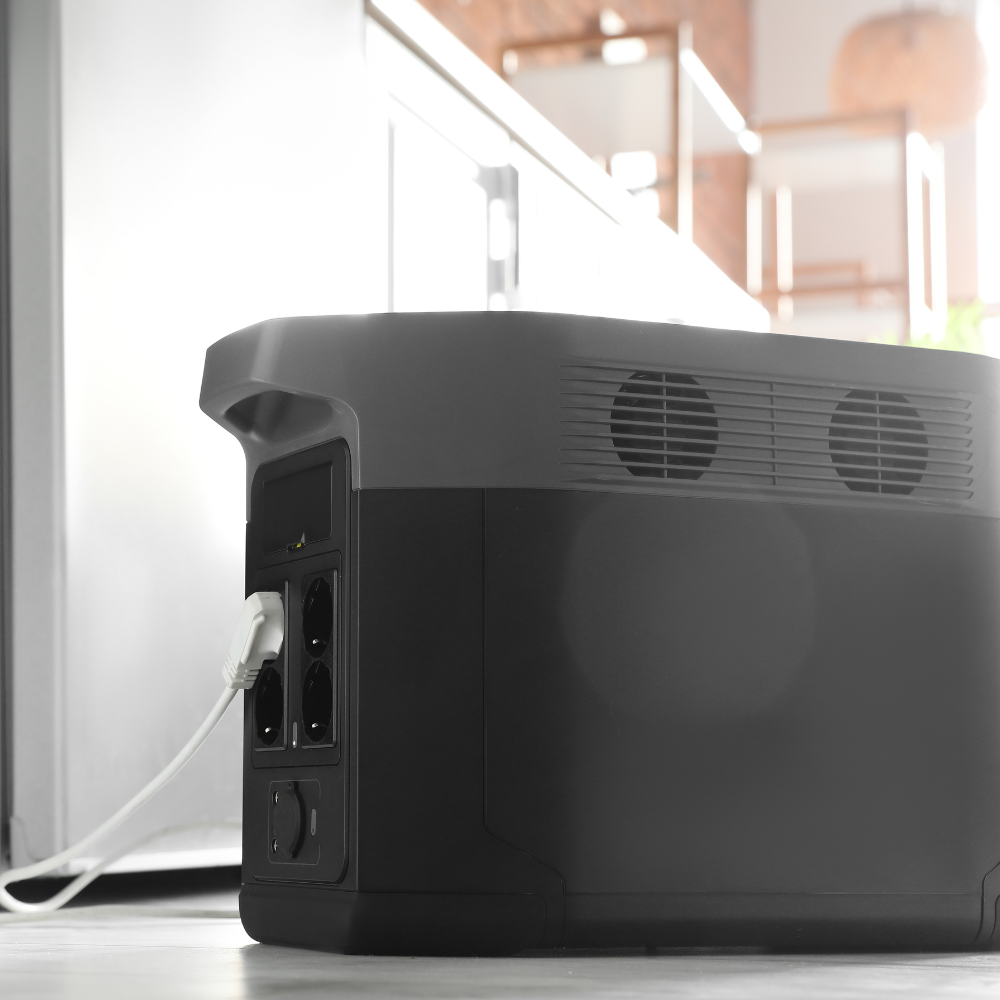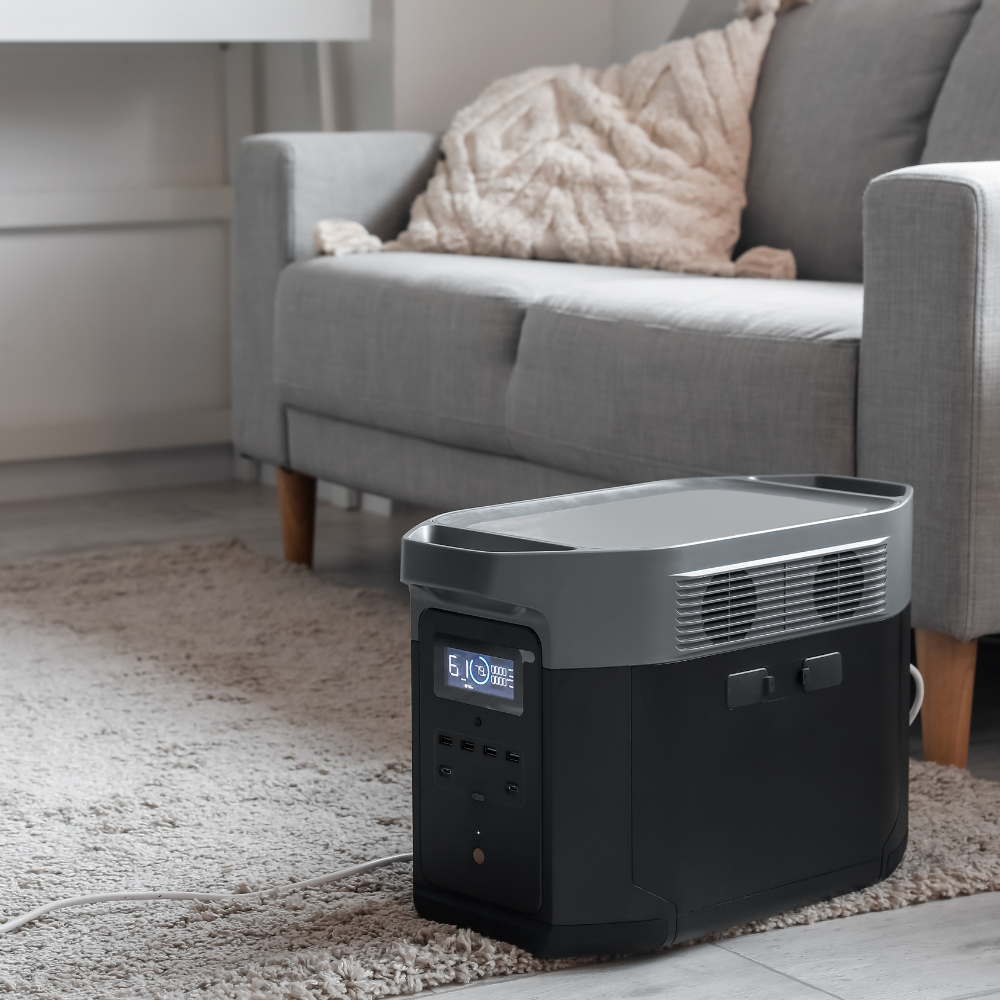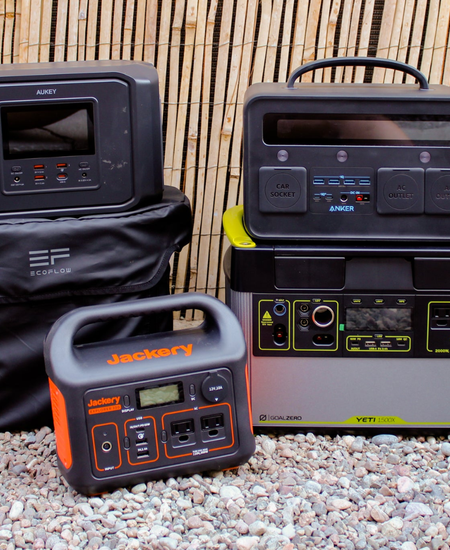Portable power stations have become increasingly popular for outdoor activities such as camping, hiking, and road trips. They provide a reliable and convenient source of power when you're away from the grid.
But with so many options available on the market, it can be overwhelming to determine what size portable power station you need. In this guide, we will walk you through everything you need to know about selecting the right size portable power station for your needs.
Why Size Matters
When it comes to portable power stations, size matters. The size of the power station will determine its overall capacity and weight, making a big difference in terms of portability and performance.
A larger power station will have a higher capacity, allowing you to charge more devices or run appliances for longer periods. However, they are also heavier and bulkier, making them less ideal for outdoor activities that require mobility.
On the other hand, smaller power stations are lighter and easier to transport but have lower capacities. This means they can only charge or power a limited number of devices for shorter periods.
Factors to Consider When Choosing the Right Size

When determining what size portable power station you need, there are several factors to consider. These include:
Power output
The power output of a portable power station is measured in watts. This is the amount of electricity that can be delivered at any given time. It's important to consider the devices and appliances you will be using with the power station and their wattage requirements.
For example, if you plan on powering small electronics like phones or laptops, a lower wattage power station may suffice. But if you need to power larger appliances such as mini-fridges or electric grills, you will need a higher wattage power station.
Additionally, it's important to note the peak power output of a power station. This is the maximum amount of electricity that can be delivered for a short period, usually a few seconds. Some devices and appliances may require higher peak power than their continuous wattage usage.
Battery Capacity
The battery capacity of a portable power station is measured in watt-hours (Wh). This indicates how much energy the battery can store and ultimately how long it can power your devices or appliances.
When considering battery capacity, think about the types of devices you will be using and their energy consumption. Smaller electronics like phones or cameras may have lower watt-hour requirements compared to larger appliances like fans or CPAP machines.
It's also important to consider how long you will be using the power station and if you will have access to a power source for recharging. A higher battery capacity means longer runtimes but also means a heavier and bulkier power station.
Number of Outlets
When choosing a portable power station, it's crucial to consider the number of outlets it has. This will determine how many devices or appliances you can use at once.
Some models may only have one or two outlets, while others may have multiple AC outlets, USB ports, and DC outputs. Think about the devices you plan on using and their plug types to ensure they are compatible with the power station's outlets.
It's also helpful to consider if the outlets have surge protection, which can protect your devices from potential power surges. This is especially important for sensitive electronics like laptops or cameras.
Types of Devices/Appliances
Different types of devices and appliances require different amounts of power. When selecting a portable power station, think about what you will be powering and their specific wattage requirements.
For example, charging a phone or camera may only require a few watts, while running a mini-fridge or electric grill may require several hundred watts. It's essential to choose a power station that can handle all the devices and appliances you plan on using.
Also, consider the power station's compatibility with different devices. Some may only have AC outlets, while others may also have USB or DC ports for charging smaller electronics.
Duration of Use
Lastly, consider how long you will be using the portable power station. If you plan on using it for short periods and recharging frequently, a smaller capacity power station may suffice.
But if you need to power devices/appliances for extended periods without access to a power source, then a higher battery capacity is necessary.
It's also important to think about the weight and portability of the power station if you will be carrying it around for an extended period. A heavier and bulkier power station may be challenging to transport on longer hikes or trips.
So these are the main factors to consider when choosing the right size portable power station. Ultimately, it comes down to your specific needs and preferences. Consider all these factors carefully before making a purchase to ensure you get the best-size power station for your next outdoor adventure.
Does Bigger Always Mean Better?
While a larger portable power station may have higher capacities and more outlets, it's not always the best choice for everyone. It ultimately depends on your individual needs and usage.
For those who prioritize portability and mobility, a smaller power station may be a better fit. They are lighter and easier to transport, making them ideal for camping or hiking trips. Plus, they can still charge small electronics like phones or cameras.
However, if you need to run larger appliances or multiple devices for extended periods without access to a power source, then a bigger power station may be necessary. Just keep in mind that they will be heavier and bulkier to carry.
It's also important to note that a larger power station may come with a higher price tag. So if you don't need the extra capacity, it may not be worth the added cost. Also, remember to consider the power station's charging time. Larger batteries will take longer to recharge, so plan accordingly.
How To Choose the Right Size Portable Power Station

Choosing the right size portable power station ultimately depends on your specific needs and usage. Here are some key factors to consider before making a purchase:
Power output
Power output is a critical factor when selecting a portable power station. It indicates how much power the station can deliver at any given time, usually measured in watts.
Understanding your power needs is essential; devices such as smartphones and tablets typically require less power, while larger appliances like refrigerators or power tools can demand significantly more.
It’s also vital to consider both continuous output—how much power can be supplied over time—and peak output, which is the maximum power available for short bursts. Ensure the portable power station can handle the wattage requirements of all devices you plan to use simultaneously.
Battery capacity
Battery capacity refers to the total amount of energy a portable power station can store, typically measured in watt-hours (Wh). This measurement is crucial as it determines how long the power station can run your devices before needing a recharge.
When assessing battery capacity, it’s important to identify the energy consumption of the devices you plan to connect. For instance, a power station with a capacity of 500Wh could run a 100W appliance for approximately five hours, assuming no energy losses.
Additionally, consider your usage patterns; if you plan to power multiple devices continuously or use high-wattage appliances, opt for a higher capacity unit to prevent interruptions and ensure reliable power supply during outdoor activities.
Number of outlets
When choosing a portable power station, consider the number and type of outlets it offers. Depending on your needs, you may need multiple AC, USB, or DC ports to charge different devices simultaneously.
Some power stations also offer specialized outlets, such as car jump starters or regulated DC output for powering sensitive electronics. Consider all the devices and appliances you plan to use and ensure that the power station has enough compatible outlets to meet your needs.
Plus, having additional outlets can also come in handy for unexpected situations or emergencies. And remember to check the total wattage capacity of all outlets combined to ensure it can handle your power needs.
Types of devices/appliances you will be using
It's crucial to consider the types of devices and appliances you plan on powering with a portable power station. Different devices may have varying power requirements, so make sure the power station can handle them all.
For example, charging a phone or running a small LED light only requires a few watts, while an electric grill or medical equipment may require higher outputs. Pay attention to both DC (direct current) and AC (alternating current) capabilities of the power station as well.
Additionally, consider any potential compatibility issues. Some power stations may not be suitable for use with high-powered devices like hair dryers or microwaves, so double-check the specifications before making a purchase.
Duration of use
The duration of your outdoor adventure will also play a significant role in choosing the right size portable power station. For shorter trips, a smaller and lighter option may suffice, while longer trips may require a larger capacity unit.
Additionally, think about how often you will need to recharge the power station during your trip. If you plan on using it frequently or for extended periods, opt for a higher capacity unit to avoid running out of power unexpectedly.
However, keep in mind that larger batteries will also take longer to recharge, so plan accordingly and consider bringing a solar panel charger if you will be off-grid for an extended period.
Portability and weight
The portability and weight of a portable power station are crucial factors to consider, especially for outdoor activities. A smaller unit may be easier to transport but may not have enough capacity to meet your needs.
On the other hand, larger units with higher capacities can become heavy and cumbersome to carry around. Consider the type of activities you will be doing and how much weight you are comfortable carrying before making a decision.
Some power stations come with features like foldable handles or wheels for easier transportation. It's also worth considering if the unit can fit in your backpack or vehicle comfortably.
Price and charging time
Last but not least, consider the price and charging time of the portable power station. Higher capacity units with more features will typically come at a higher cost.
But keep in mind that investing in a quality power station can save you money in the long run by providing reliable power during outdoor activities or emergency situations.
Also, remember to factor in the charging time when comparing prices. Larger batteries will take longer to recharge, so make sure to plan accordingly and bring alternative charging methods if needed.
So these are all important aspects to consider when choosing a portable power station. Ultimately, the right one for you will depend on your specific needs and usage patterns. Do thorough research and compare different options before making a decision to ensure you choose the best portable power station for your lifestyle.
How Much Budget Do You Need?
The cost of a portable power station can vary greatly, depending on its battery capacity, features, and brand. It's essential to determine your budget before starting your search to narrow down your options.
Smaller units with lower battery capacities often range from $100-$300, while larger and more advanced models can cost anywhere from $500-$1500 or more. Keep in mind that investing in a high-quality unit with the right features for your needs may save you money in the long run by providing reliable power without the need for frequent replacements.
Additionally, consider any additional costs such as solar panels or accessories that may be necessary for your specific usage. Don't forget to factor in charging time when comparing prices, as larger units may require more time and additional charging methods.
Can a Portable Power Station Replace a Generator?

Many people wonder if a portable power station can replace a traditional generator. While both provide power during outdoor activities or emergencies, they have significant differences that may make one more suitable for your specific needs.
A portable power station typically uses lithium-ion batteries to store electricity and is designed to be lightweight and easily transportable. They are also much quieter than generators and produce no fumes, making them safe for indoor use.
On the other hand, generators use fuel like gasoline or propane to generate electricity and can usually provide higher wattage output. However, they are heavier, louder, and require frequent refueling.
In general, a portable power station is suitable for powering smaller devices and appliances, while a generator may be necessary for larger ones. If you have specific power requirements or plan on using high-powered devices, a generator may be the better option.
Ultimately, it's best to consider your needs and usage patterns before deciding between a portable power station or a generator. You may also opt for a combination of both depending on your situation. Always follow safety guidelines and instructions when operating any type of power source.
Mistakes to Avoid when Using a Portable Power Station

While portable power stations are convenient and efficient sources of power, there are some common mistakes that users should avoid to ensure the longevity and safety of their units. Here are some key mistakes to avoid when using a portable power station:
- Overcharging: Many people make the mistake of leaving their power station plugged in and charging for extended periods, which can damage the batteries. It's essential to unplug the unit once it reaches full capacity. And if you plan on storing it for a while, make sure to partially discharge the battery first.
- Using incorrect charging methods: Portable power stations often come with specific instructions for charging, including which chargers or solar panels are compatible. Using the wrong charging method can damage the unit and void its warranty, so always follow the manufacturer's recommendations.
- Overloading: It's crucial to understand the wattage capacity of your power station and avoid overloading it by plugging in too many high-powered devices at once. Exceeding the maximum wattage output can damage both your devices and the power station itself.
- Not properly maintained: Like any other electronic device, a portable power station requires proper maintenance to ensure optimal functioning. This includes regular cleaning and storage in a cool, dry place when not in use.
By avoiding these common mistakes, you can prolong the life of your portable power station and ensure safe and reliable power whenever you need it.
FAQs
How do I choose the right portable power station for my needs?
To choose the right portable power station, consider the power station's capacity in relation to your energy needs. Assess what devices you plan to power during power outages or outdoor activities and match that with the portable power station capacity.
What factors determine the size of the best portable power stations?
The size of the best portable power stations is determined by their power station capacity, runtime, and the type of solar power input. For smaller needs, a small portable power station might be sufficient, but larger capacity units are better for extended use.
How does a portable power station's capacity affect its runtime?
A portable power station's capacity directly impacts its runtime. Larger capacity stations will generally provide longer runtimes, which is crucial during power outages or when relying on solar power for extended periods.
When would a small portable power station be sufficient?
A small portable power station is ideal for short-term use or powering a few small devices. It's best suited for situations where you need limited energy, such as charging phones or running small appliances during brief power outages.
Can I use solar power to recharge my portable power station?
Yes, many of the best portable power stations are compatible with solar power. Ensure your selected power station supports solar charging to extend portable power station runtime during outdoor activities or long-term power outages.
How can I determine the right portable power station capacity for my needs?
The right portable power station capacity depends on the devices you need to power and how long you plan to use them. It's important to review tested portable power stations to ensure they meet your specific power requirements during emergencies or off-grid situations.
Conclusion
A portable power station is a valuable investment for anyone who enjoys outdoor activities or wants to be prepared for emergencies. When choosing the right one for you, consider your budget, power needs, and usage patterns.
Remember to avoid common mistakes such as overcharging, incorrect charging methods, overloading, and not properly maintaining your unit. With proper research and care, a portable power station can provide reliable and convenient power for all your adventures.
So start exploring today with the peace of mind that comes with knowing you have a reliable source of electricity by your side! Now, get out there and enjoy the great outdoors without worrying about losing power.
Subscribe to our email newsletter and unlock access to members-only content and exclusive updates.

Comments